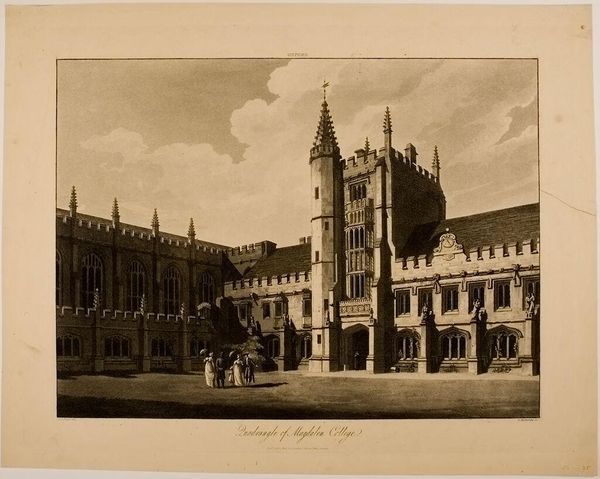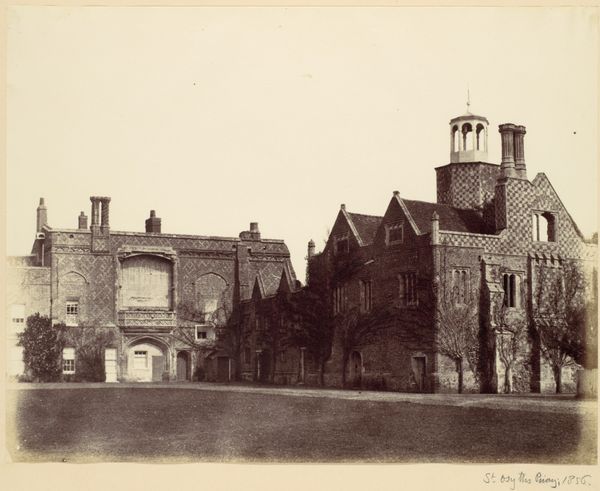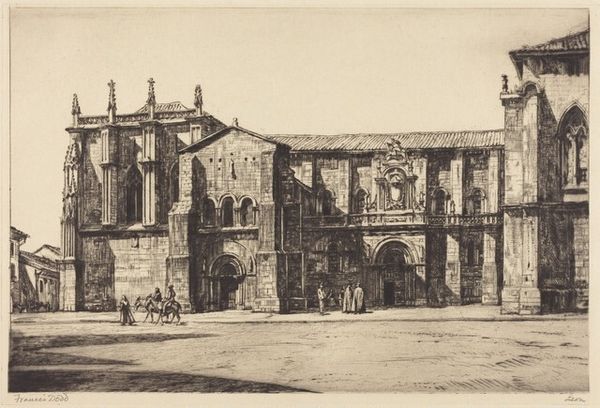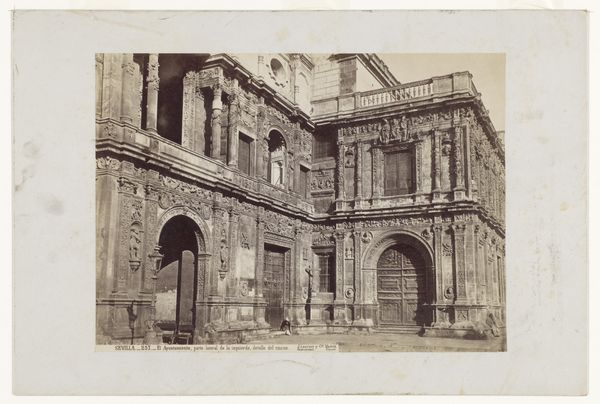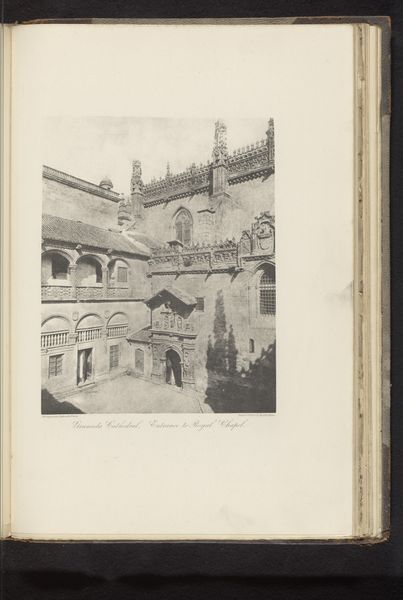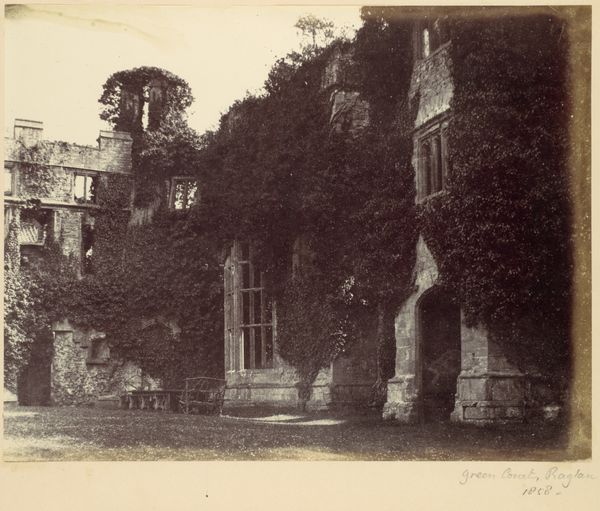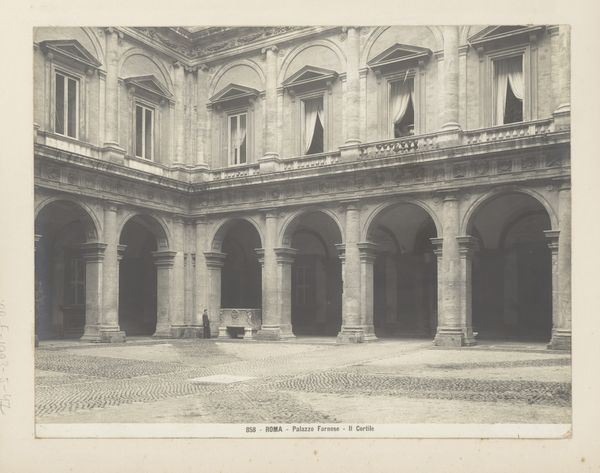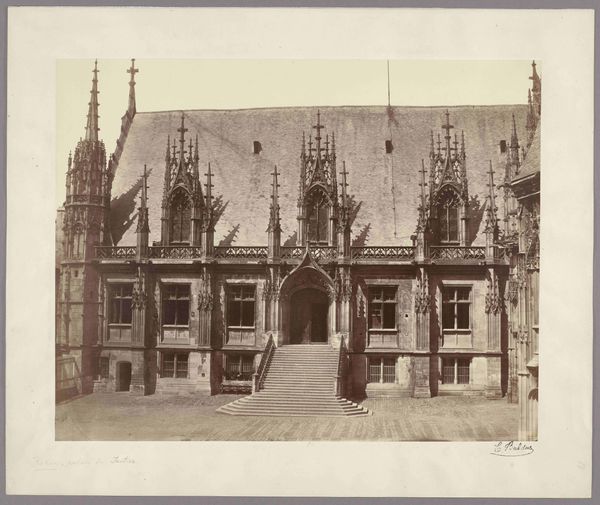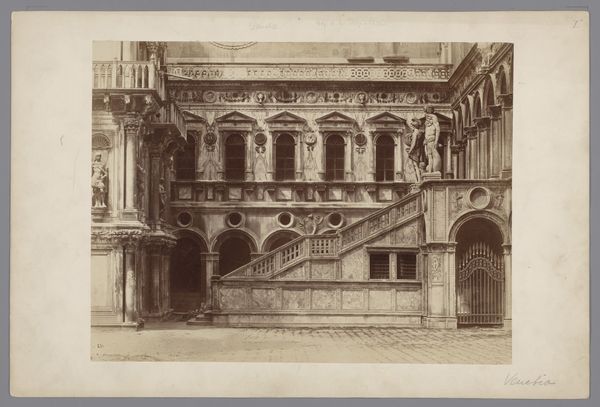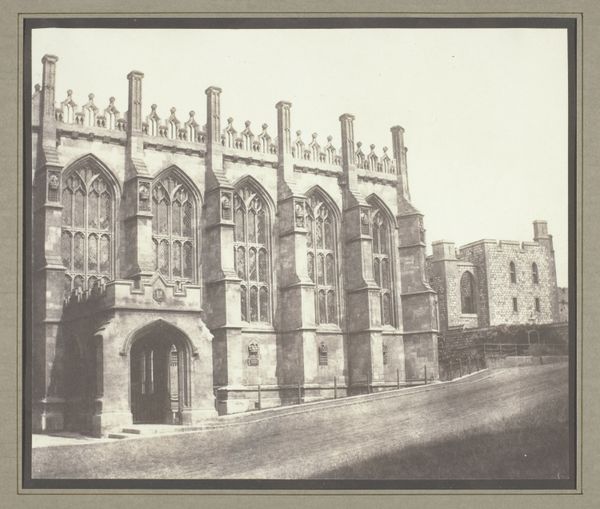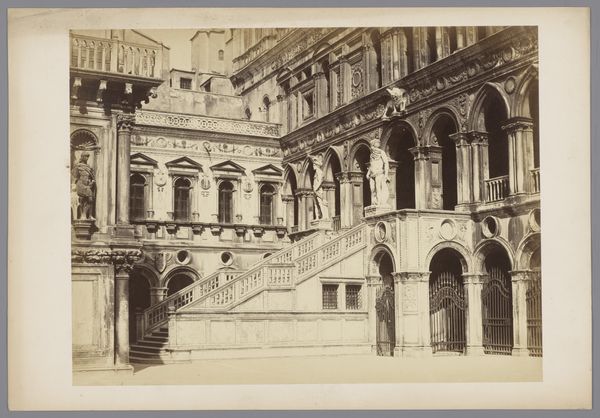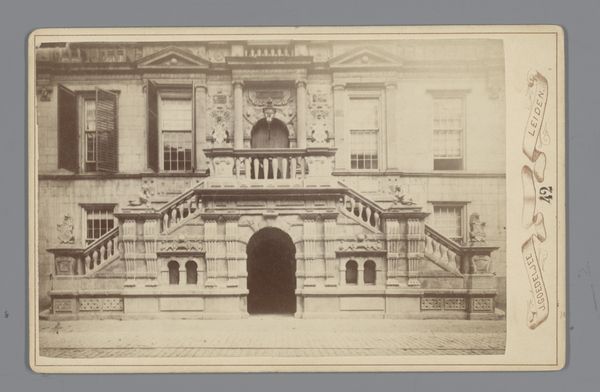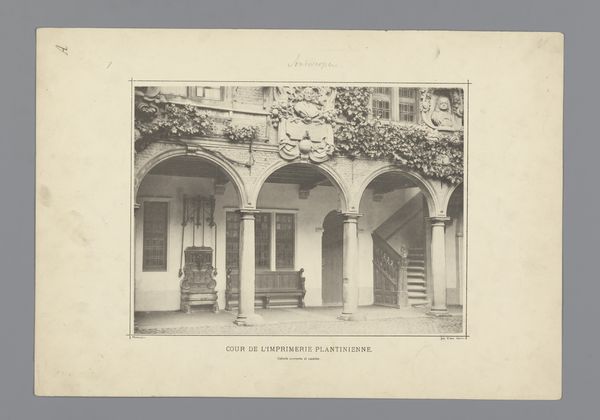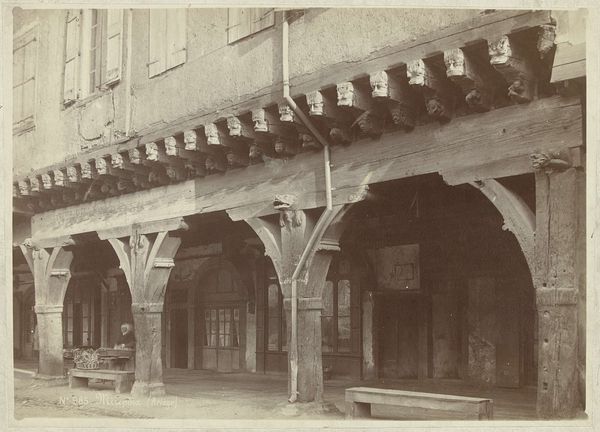
photography, albumen-print, architecture
#
medieval
#
landscape
#
photography
#
albumen-print
#
architecture
Dimensions: 21.1 x 27.1 cm. (8 5/16 x 10 11/16 in.)
Copyright: Public Domain
Curator: "Cloisters, Magdalen," captured in 1859 by Alfred Capel Cure. This albumen print, currently residing at The Met, showcases a portion of the architectural marvel. What strikes you initially? Editor: Hauntingly still. It feels like time itself is holding its breath. The monochromatic palette adds to that effect. There's a distinct contrast between the rigid geometry of the architecture and the soft, creeping life of the ivy. Curator: That contrast is telling, isn't it? It speaks volumes about the Victorian fascination with medieval aesthetics viewed through a rapidly industrializing lens. Cloisters such as these represented an idealized past—orderly, contemplative, and seemingly untouched by the messy realities of modern life. Editor: And it's such a deliberate act, isn't it, capturing it with this new medium of photography? Preserving a fleeting glimpse of what’s inevitably passing. Like trapping smoke, or a memory. There is melancholy, but also defiance, right? "I will hold onto this," the picture seems to say. Curator: Precisely. The cloisters were powerful symbols, institutions deeply embedded in the social and religious fabric. This image becomes more than just an architectural study; it documents the cultural weight placed upon these sites and the desire to preserve that legacy. Editor: It's interesting how photography changed the act of viewing art too. Before this, most people experienced architecture through drawings or engravings—simplified, idealized. Photography presented what was considered reality. Curator: A perceived reality indeed. But don't forget the artistry at play. Cure's choices—composition, lighting—were deliberate acts of interpretation, not mere replication. His perspective inevitably shaped how viewers understood Magdalen College then and even now. Editor: Which really throws a wrench in our own reading of this too. His bias affects my interpretation. A double layer. Curator: A thought to linger on, I think. In revisiting this image, the layers of intention become another facet. Thank you for helping draw out new nuances for our listeners. Editor: Anytime! The magic is in looking again, right? Finding fresh pathways through time, or stone.
Comments
No comments
Be the first to comment and join the conversation on the ultimate creative platform.
